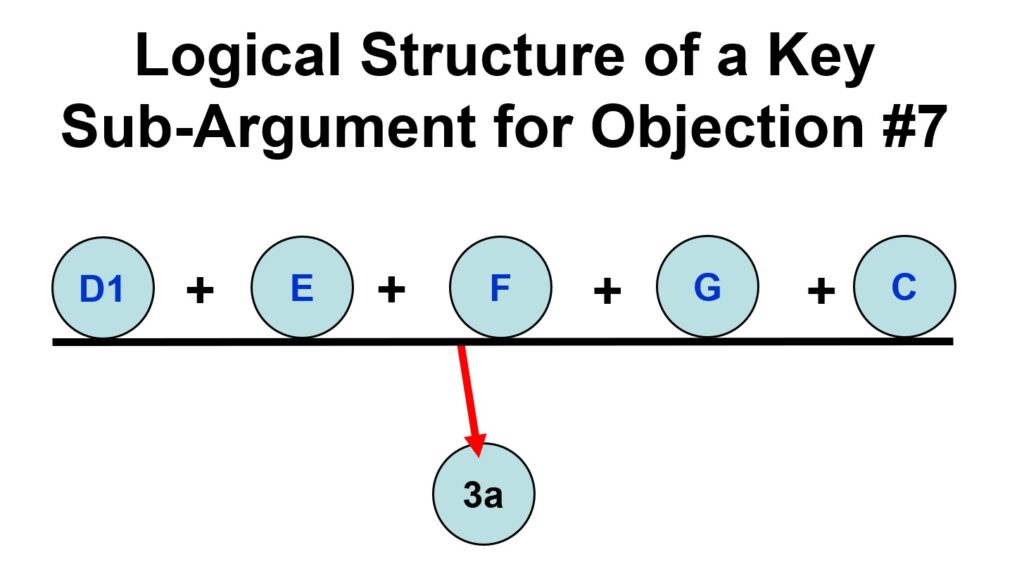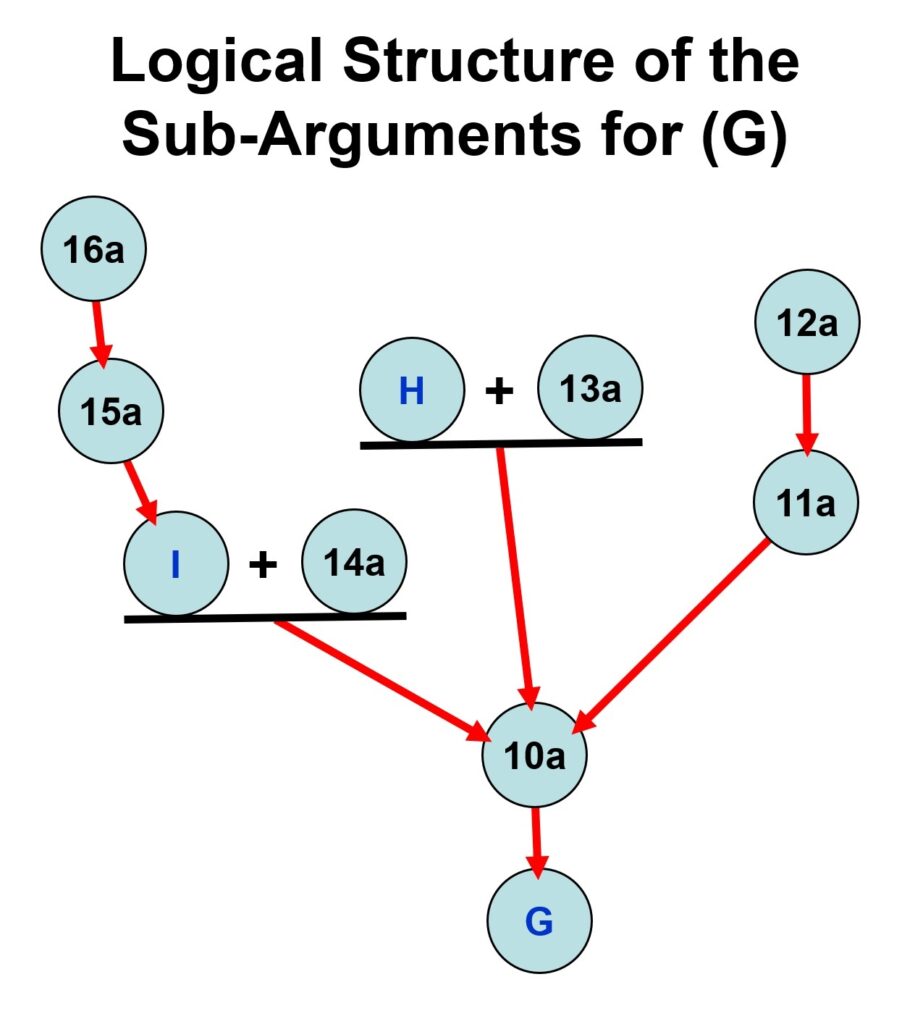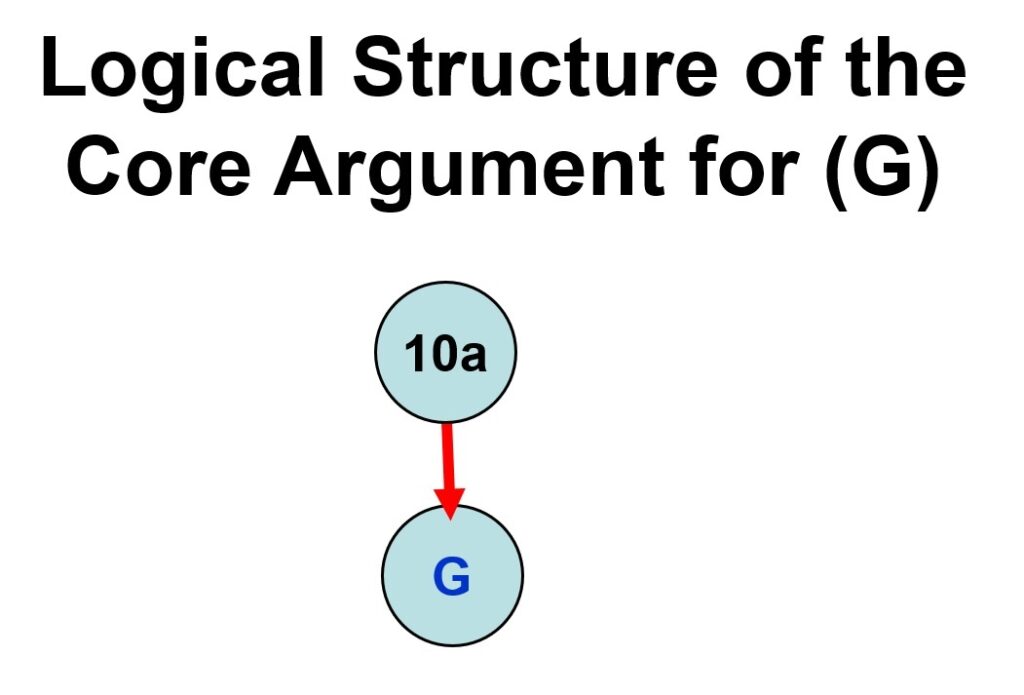Kreeft’s Case Against the Swoon Theory – Part 29: The Sub-Arguments for Premise (G)
WHERE WE ARE
Premise (3a) is a key premise in the core argument of Objection #7 (Who Moved the Stone?) against the Swoon Theory. Here is the argument supporting premise (3a):

In previous posts, I have shown that premise (C) is FALSE, and that premises (D1), (E), and (F) are DUBIOUS. So, it is abundantly clear that this argument for premise (3a) is a hopelessly BAD argument. Since premise (3a) is not obviously true, we may reasonably conclude that premise (3a) is DUBIOUS. Since premise (3a) is a key premise in the core argument of Objection #7, we should reject the core argument. Therefore, Objection #7 (Who Moved the Stone?) against the Swoon Theory FAILS.
In this current post, I will argue that premise (G), another premise in the argument for (3a) is DUBIOUS, providing yet another good reason to believe that the key premise (3a) is also DUBIOUS.
THE SUB-ARGUMENTS FOR PREMISE (G)

There are three different sub-arguments supporting premise (10a), and then premise (10a) is the reason given in support of premise (G). The inference from (10a) to (G) is the core argument for premise (G):

10a. The story that the Roman soldiers who were guarding Jesus’ tomb fell asleep and that some (or all) of Jesus’ eleven remaining disciples moved the stone from the door of Jesus’ tomb and stole the body of Jesus is unbelievable.
THEREFORE:
G. It is NOT the case that some or all of Jesus’ eleven remaining disciples moved the stone from the door of Jesus’ tomb on the weekend after Jesus was crucified.
EVALUATION OF THE CORE ARGUMENT FOR PREMISE (G)
The inference from (10a) to (G) is INVALID. Premise (10a) asserts that the skeptical theory that “The Disciples Stole Jesus’ Body while the Roman Soldiers Slept” is FALSE. But the conclusion (G) is NOT concerned with that skeptical theory; it is concerned with the Swoon Theory. In other words, refuting the theory that “The Disciples Stole Jesus’ Body while the Roman Soldiers Slept” is NOT relevant to a refutation of the Swoon Theory. Kreeft and Tacelli in attacking the theory that “The Disciples Stole Jesus’ Body while the Roman Soldiers Slept” are committing the RED HERRING FALLACY. Refuting a different theory than the Swoon Theory is irrelevant to a refutation of the Swoon Theory.
Here are some scenarios in which the theory that “The Disciples Stole Jesus’ Body while the Roman Soldiers Slept” would be FALSE, but in which the claim that “some or all of Jesus’ eleven remaining disciples moved the stone from the door of Jesus’ tomb on the weekend after Jesus was crucified” would be TRUE:
- There were no Roman soldiers guarding the tomb of Jesus on the weekend after Jesus was crucified, so five of the eleven disciples of Jesus moved the stone from the door of the tomb without anyone trying to prevent them from doing so.
- There were Roman soldiers guarding the tomb of Jesus on the weekend after Jesus was crucified, and the soldiers who were on duty remained awake for their entire shift, but the soldiers were too drunk to stop nine of Jesus’ disciples from moving the stone from the door of the tomb.
- There were Roman soldiers guarding the tomb of Jesus on the weekend after Jesus was crucified, and the soldiers who were on duty remained awake for their entire shift, but ten of the eleven disciples of Jesus snuck up on the two guards who were stationed by the door of the tomb and quickly physically overpowered the soldiers and gagged the soldiers before they could shout to wake up other soldiers who were off duty and relaxing in a more comfortable location about 50 yards away. Then the ten disciples moved the stone from the door of the tomb.
- There were Roman soldiers guarding the tomb of Jesus on the weekend after Jesus was crucified, and the soldiers who were on duty remained awake for their entire shift, but Joseph of Arimathea quietly offered the two guards who were stationed by the door of the tomb a bag of gold if they would walk away from the tomb for just a few minutes, and when the two guards accepted the bribe and walked away, seven of the eleven disciples of Jesus ran up to the stone and moved it from the door of the tomb.
In all four of the above scenarios, the skeptical theory that “The Disciples Stole Jesus’ Body while the Roman Soldiers Slept” would be FALSE, because either there were no Roman soldiers guarding the tomb, or there were Roman soldiers guarding the tomb but the soldiers did NOT fall asleep while on duty. However, in all four scenarios, the claim that “some or all of Jesus’ eleven remaining disciples moved the stone from the door of Jesus’ tomb on the weekend after Jesus was crucified” would be TRUE.
The skeptical theory that “The Disciples Stole Jesus’ Body while the Roman Soldiers Slept” can be FALSE, while it is TRUE that some (or all) of Jesus’ eleven disciples moved the stone from the door of the tomb. Therefore, premise (G) DOES NOT FOLLOW from premise (10a), and the above core argument for (G) is INVALID. Since we should reject the core argument for (G), and since (G) is not obviously true, we may reasonably conclude that premise (G) is DUBIOUS, just like premises (D1), (E), and (F).
Because premise (G) is DUBIOUS, we should reject the sub-argument for the key premise (3a), and since (3a) is not obviously true, we should conclude that the key premise (3a) is also DUBIOUS, and thus reject the core argument for Objection #7 (Who Moved the Stone?). Therefore, Objection #7 against the Swoon Theory FAILS.
Because I have already provided a number of good reasons to reject the sub-argument for the key premise (3a), and because the core argument for (G) is INVALID, I will not be carefully examining and evaluating the three arguments given in support of premise (10a).
